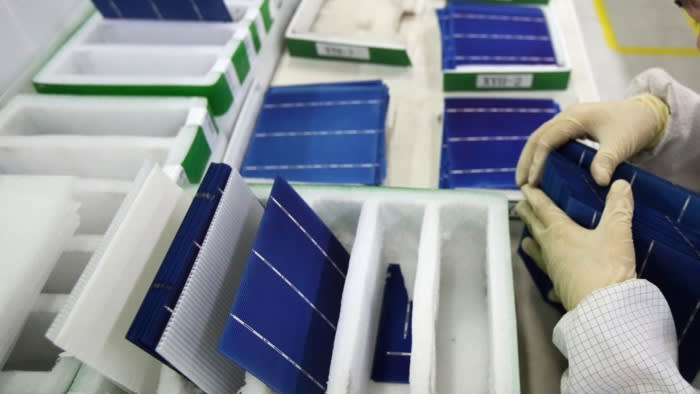Unlock the Editor’s Digest for free
Roula Khalaf, Editor of the FT, selects her favourite stories in this weekly newsletter.
Batteries, solar panels and nuclear weapons all have one material in common: antimony. As Beijing tightens its grip on rare-earth materials — seen as retaliation for growing trade restrictions and tariffs on Chinese-made products — global supply chains won’t be able to avoid the fallout.
Rare metals prices have surged in recent months as China has started to increase restrictions on exports of the critical materials. But few have spiked like antimony. Last month, authorities announced the implementation of export licences on antimony, with the new measures going into effect on September 15.

Antimony’s flame and heat resistant properties make it crucial in the production of batteries, especially lead-acid storage batteries and those used in cars. It is also used to make other car parts including brake pads.
In recent years, the global shift to green energy has created new demand for antimony. The material is able to improve transparency for the cover glass on solar cells. This super-clear glass helps the performance of solar cells and is also used in the screens of smartphones.
More crucially, a long-term shortage of antimony could pose a security risk. It is a critical material in the defence supply chain, and is used in everything from nuclear weapons production to making night vision goggles, ammunition and infrared sensors.
The export restrictions have yet to go into effect. But antimony prices have already hit a record high. Spot prices in Europe and China have surpassed $25,000 per tonne, more than double prices at the end of last year.
For global users of this element, finding a substitute supplier does not look easy. Demand is high and China is the biggest producer of antimony globally, with nearly half the global market share, according to the US Geological Survey.

The US, in contrast, has not mined any marketable antimony since 1997. Production from countries such as Russia and Myanmar would introduce complications into supply chains thanks to sanctions. Even these deposits are also often partially mined by Chinese-owned companies, which have a dominant position in processing and refining the material once mined.
Shares in Hunan Gold Corporation, one of the biggest antimony producers, have gained 35 per cent this year. Shares of Perpetua Resources, whose gold-antimony mine in Idaho is one of the rare US sources of antimony deposits, are up by half over the past month with shares nearly tripling in the past six months.
Until the world’s supply chains find an alternative to Chinese-controlled sources of antimony, prices should only keep going up.



